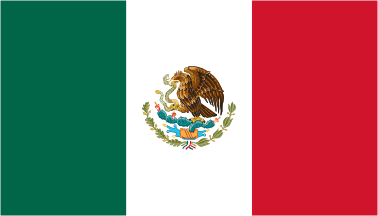Mexico

By Carlos López Mariscal
Physics research in Mexico is a typical example of scientific activity in the third world. Usually, basic science is allocated a small portion of the already limited budget for research. Simultaneously, private investments are preferably concentrated on fast-return ventures with little risk, usually related to low-tech advancements with applications in mass production. The importance of scientific research is not necessarily underestimated, but there certainly exists a prominent lack of public awareness regarding science in the country's population. However, research activity in Physics and Optics has benefited from recent growth in several academic programs.
Mexico's research in Physics is located in several different cities. Important clusters of advanced studies of the National Polytechnical Institute are to be found in Guadalajara, Merida and Mexico City. The National University of Mexico in Mexico City is a locus of research activity, not only in Physics, but also in Biomedicine, Material Sciences, Neurobiology and Mathematics amongst others. The three major Optics Centers can be found in Ensenada's CICESE, near the US border with San Diego, where research also includes Earth and Computer sciences along with Oceanology and Microbiology. CIO in Guanajuato has strong research groups in Optical Metrology and Fiber Optics, and finally INAOE in Tonantzintla, where Astrophysics and Electronics are also major lines of research. Recently, efforts have been focused in the construction of new facilities for millimeter-wavelength astronomy in the state of Puebla, in central Mexico.
{CINVESTAV: http://www.cinvestav.mx/}
{CICESE: http://www.cicese.mx}
{CIO: http://www.cio.mx}
{LARGE MILLIMETER TELESCOPE http://www.lmtgtm.org/}
{INAOE http://www.inaoep.mx/ (Spanish only)}
Within the country, several universities offer graduate programs in physics and related fields. I am currently enrolled at Tecnologico de Monterrey in the Optical Engineering graduate program. This program was recently created and has been attracting students interested mostly in Optics and Photonics. Typically, a student will be granted a Master's degree within two years and a Ph.D. degree after approximately three more years. Course work includes basic courses such as: Propagation and Fiber Optics, Computer Simulation for Optics, Digital Image Processing, Topics on Diffractive Optics and Laser Applications. Additionally, students are often offered specialized courses based on their particular interests.
{Tec de Monterrey: http://www.itesm.mx}
{Graduate Program: http://www.opticseducation.org/search/program.cfm?id=340}
Funding opportunities for graduate students are available from several different sources, such as The Excellence Scholarship program - awarded to candidates wit outstanding academic achievement in agreement with the National Council for Science and Technology (CONACyT). In my academic department, other sources of funding include research and teaching assistanceships sponsored by the Research Chair in Optics and the Physics Department. These are awarded on a limited basis to select students who have defined their research subject towards thesis work.
Most of the research in Physics done by graduate students at Tecnologico de Monterrey originates within the Photonics and Mathematical Optics Group (PMOG). Faculty members with Optics related interests, lead by the Optics Research Chair, advise students on their research projects, both in theoretical and experimental work. In particular, I work on experimental methods for the production of non-diffracting beams and their applications in Optical trapping and manipulation. Other projects within the PMOG include the construction and design of laser resonators with special characteristics, and theoretical work on soliton and propagation physics. The growth of the group is witnessed by the SPIE and OSA local student chapters, which are devoted to student and community awareness activities throughout the academic year.
{PMOG: http://optica.mty.itesm.mx/pmog}
{SPIE Student Chapter: http://spie.mty.itesm.mx}
Tecnologico de Monterrey has only recently allocated significant funds for scientific research in areas that had not traditionally been of concern for the production-oriented profile of graduates. This, along with other strategic actions, have contributed to the burgeoning of research-oriented groups and an increasing number of publications in Physics, particularly in Optics.
Because Mexico's economy has been consistently harsh over the last few decades, a significant number of graduate students find opportunities overseas to be more appealing for their scientific and financial interests. Unfortunately, only a part of them return to Mexico upon completion of their academic training. The majority of Physics and Physics Engineering majors find jobs in industry and academic institutions upon graduation.

